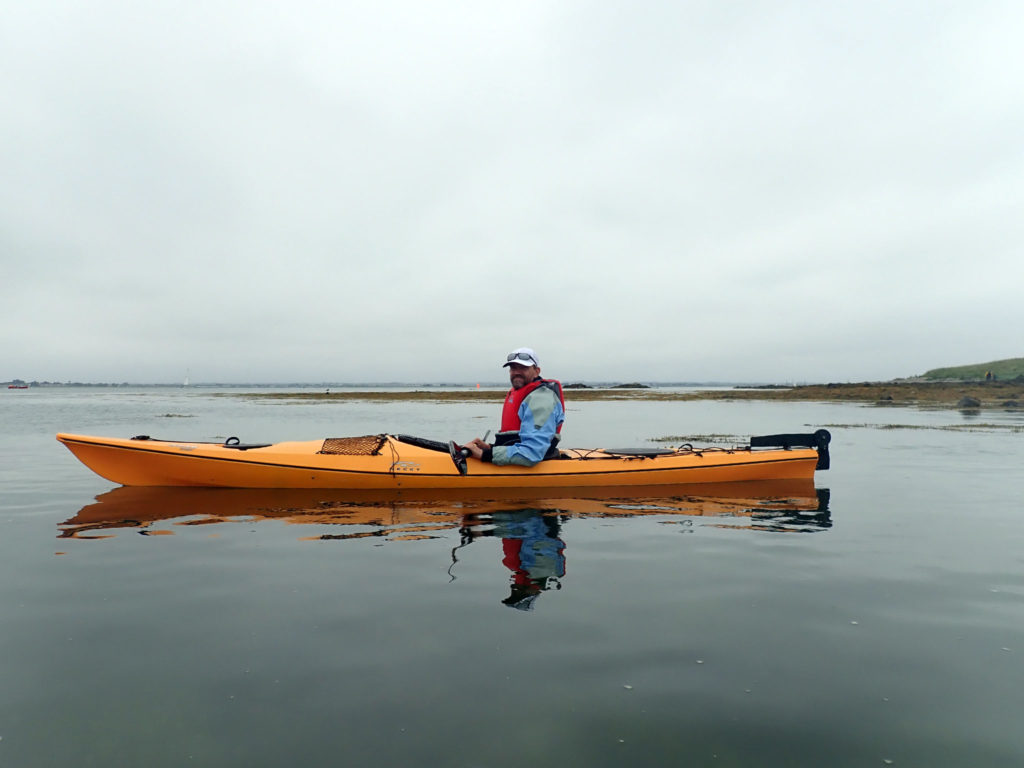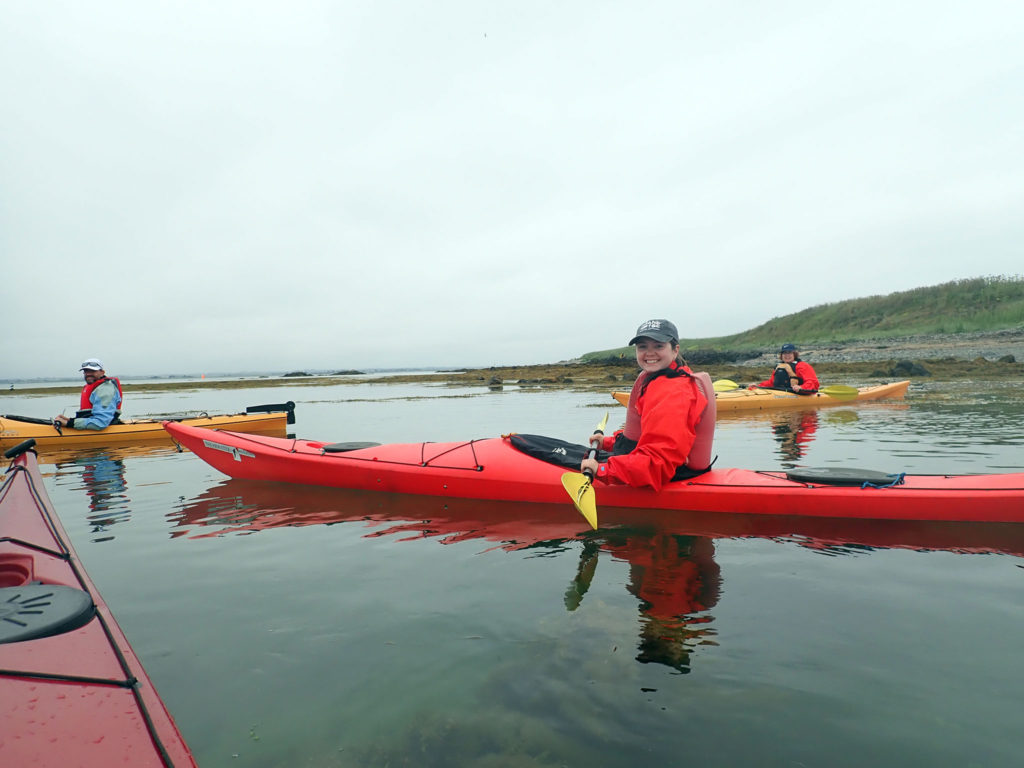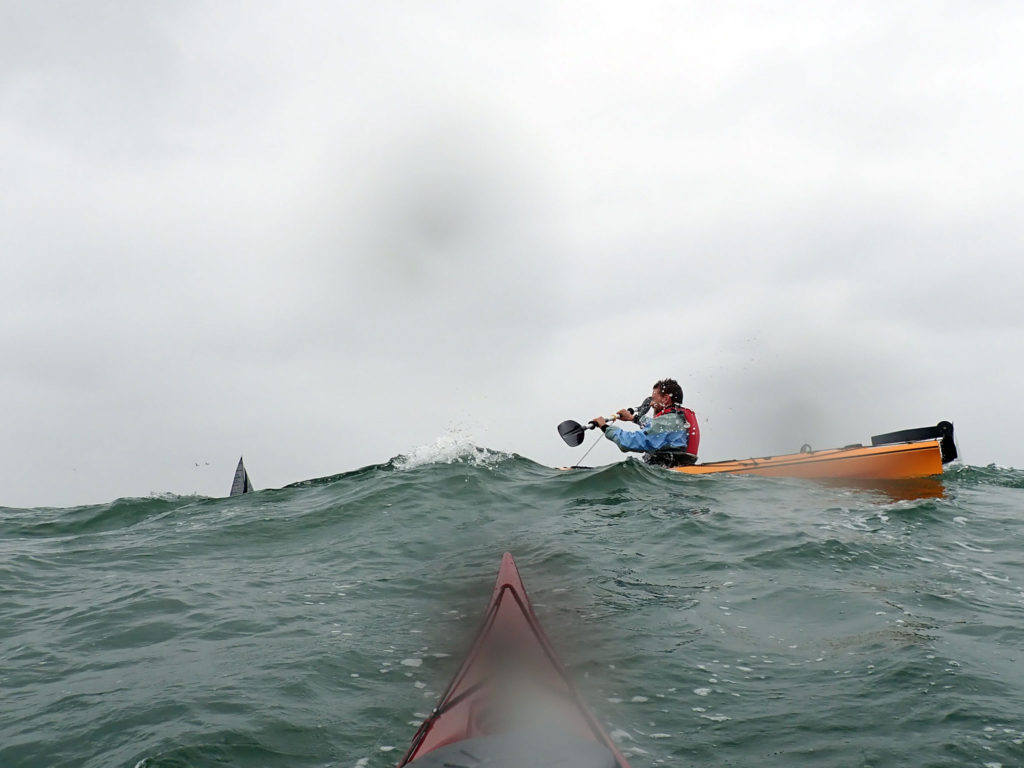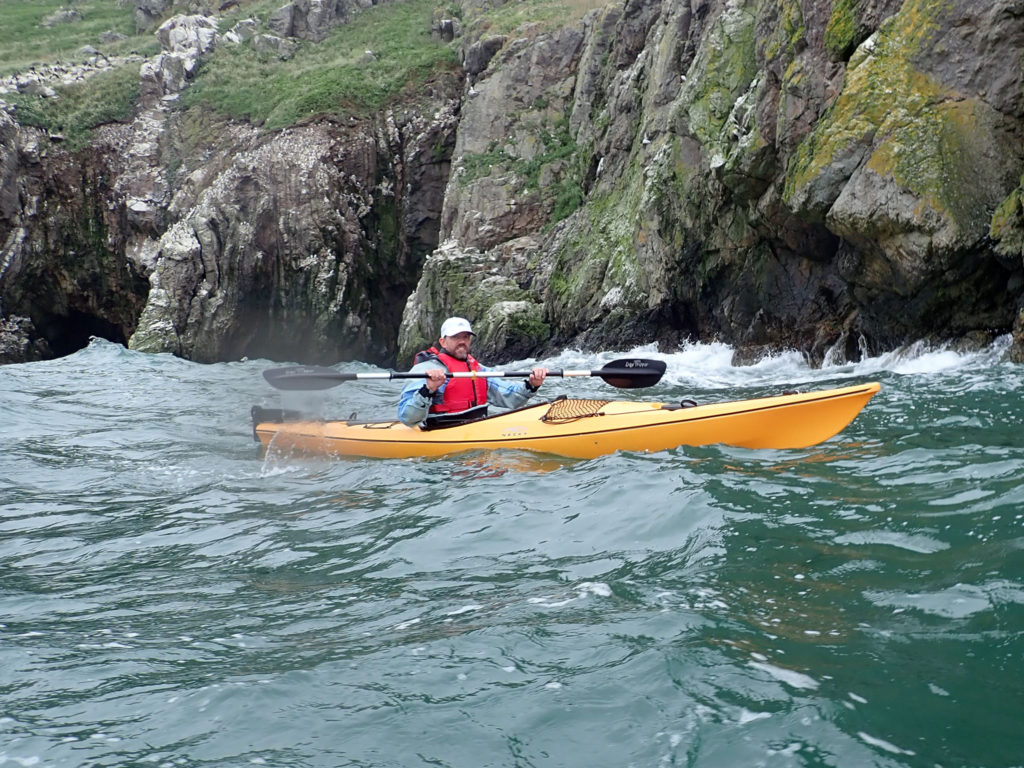Completed day one of a two-day course run by Shearwater Sea Kayaking out in Howth today. I really enjoyed it, and it was great to get some actual training at last! I learned about posture, paddling and direction control, as well as how the boat functions in the water. I also got the capsizing experience I wanted and will get more tomorrow, on day two.
I brought my own gear, which was great, as I really wanted to know what it’s like to get out of it under water. Needless to say, the capsizing training was a bit nerve-wracking at first, but actually, getting submerged is a bit of a rush, and there’s just something great about being in the sea!
The two capsizing processes we did were the “Eskimo Rescue”, where a partner nudges the bow of their boat up to your hands as they project out of the water, and you right yourself by grabbing the bow and pulling yourself up, and the re-entry procedure, where you exit the boat under water and your partner empties your boat of water and helps you back in.
The main issue I had with the “Eskimo Rescue” was figuring out what way to put my hands on the bow as I hung upside down, so I ended up being submerged for a relatively long time. I managed it well enough in the end. I did the exercise twice and did much better the second time. The instructor was very happy with how I executed the “hip-flick” to right myself before getting my head out of the water.
Getting rescued after a wet exit was fine – I was able to execute both the intra-boat method and the heel-hook method handily enough. However, there was a problem when it came to my turn to do the rescuing because my boat doesn’t have deck-lines. It meant that my partner, Alan, couldn’t offset the weight he was putting on the outside of his boat by grabbing mine. The first time we did it, we kind of hacked it by me just holding his boat steady with my arms and my weight, but the second time I was too exhausted to hold the boat, so he had to do the intra-boat entry, which didn’t suit him at all. One of the instructors also pointed out that I could have heeled myself over in the water a lot more to steady the boat, draping myself across it, and that might have been enough. It would be worth trying that tomorrow if we get a chance.
The trip went from Howth out to Ireland’s Eye, then along the west coast of the island, to the Martello Tower. The group was of mixed abilities, so Alan and I were brought separately for the capsizing training as well as a few short trips out into the heavier chop on the north-west side of the island. We were also taken into a large-mouthed, but shallow, cave there. The heavier chop and cave were great – so much what I want from kayaking. We reversed into the back of the cave, and sitting there, suddenly in the darker chamber and calmer water, with the sound of the waves echoing off the walls, looking out at the grey-green sea heaving around beyond the cave-mouth was exhilarating!
Ireland’s Eye is a good kayaking location, with calm bays and a few “tide-racing” areas, as well as the heavier sea out to the north (and presumably the east as well). It also has plenty of life on it, with several bird-species colonies, (including one of only six gannet colonies in the entire country), and a seal colony. The seals were great – there were loads of them and they were very curious. They came right up to the boats and nudged them! They were popping up all around us and occasionally doing a sudden, co-ordinated dramatic dive with a big splash, which was great! Hopefully we’ll get to see more of the north and/or east coasts tomorrow.
Unfortunately the weather was pretty bad for most of the day – raining and/or misty and a bit windy. It did dry up around lunch time, but remained overcast until late in the afternoon, after we had finished for the day. Tomorrow looks better.
Gallery
The photos were taken by Eileen from Shearwater Sea Kayaking
Notes
I need deck lines – they are pretty much required for rescues. My boat will need anchor points for them too. I should also get a neoprene spray deck; they look way better – more secure and better at dispersing water.
One of the instructors said my boat was a bit of a beast and more voluminous than would really be suitable for me. That makes sense, and I will consider getting a replacement sooner rather than later. She also said that it was a bit on the short side compared to the boats they would be putting the course participants in, which would be around sixteen feet, rather than fourteen, and that the placement of the carry-handles (a bit back from the extremities), was less than optimal for sea-kayaking. So that gives me some pointers on an upgrade. I’ll also be trying out one of their boats tomorrow, which will be very interesting as it should be slimmer and longer and quite different.
Finally, one of the instructors also said that, in sea-kayaking, there is a saying: less than three, never be! That is, three people is the minimum ideal number for proper sea voyages. That makes sense, as having two people to rescue a third would be the ideal. Also because if you capsize and have to do a wet exit, there is essentially no technique to get back in (this is total assumption on my part, but having seen what’s involved in having a partner help you get back in, I think you’d have to be very lucky and/or very skilled to get back in alone).
Taking a chance on conditions when soloing would be very risky unless you can recover from a capsize by yourself without exiting the boat. That technique was demonstrated by the instructors – basically, you capsize, then you use the paddle to lever yourself back up while you lean back as far as you can. It looks difficult to master. One of the instructors was less proficient at it and had a couple of instances where she had to try three times before succeeding. That would become exhausting very quickly, effectively making it impossible if you didn’t get back up within three-to-five attempts or so (I estimate).




